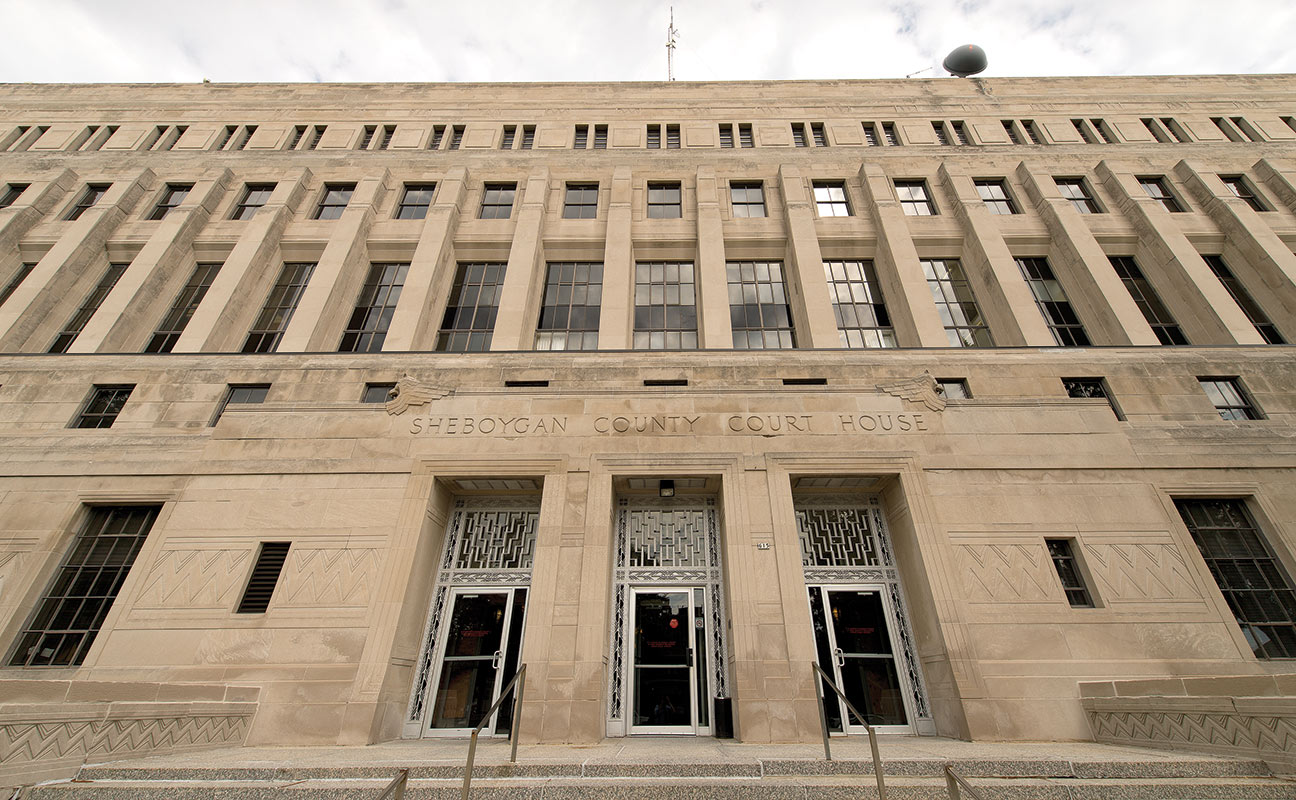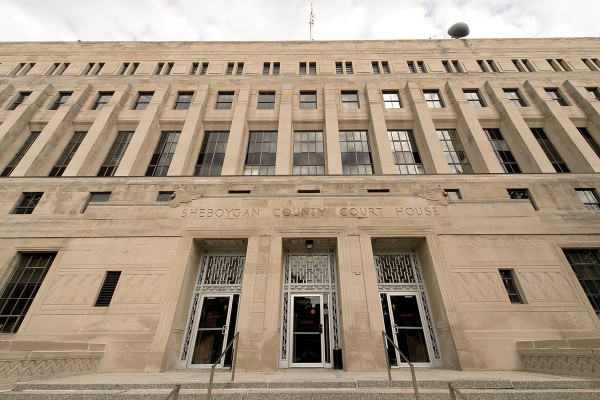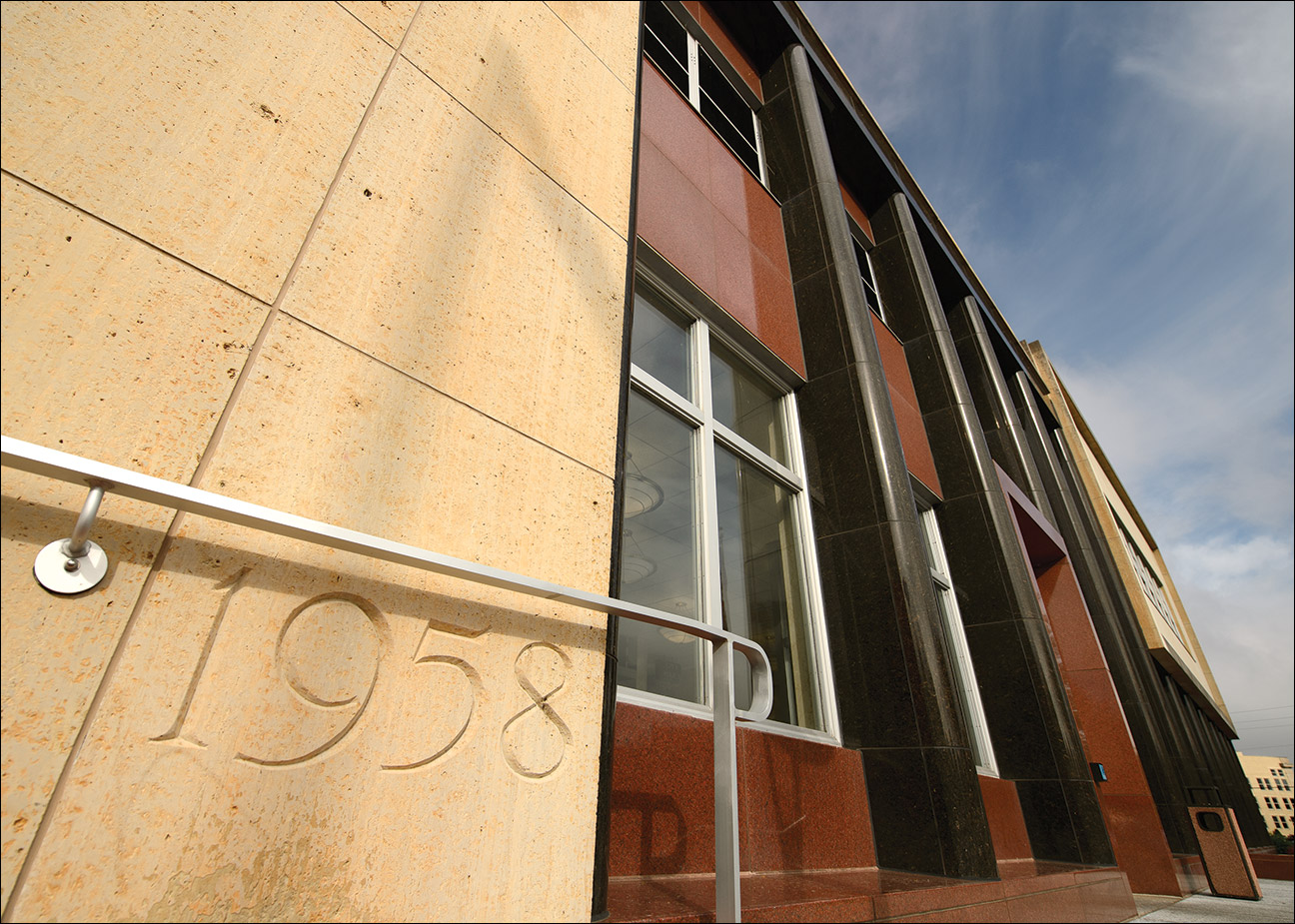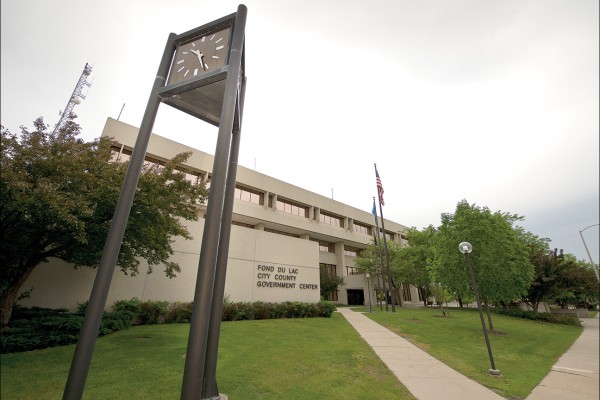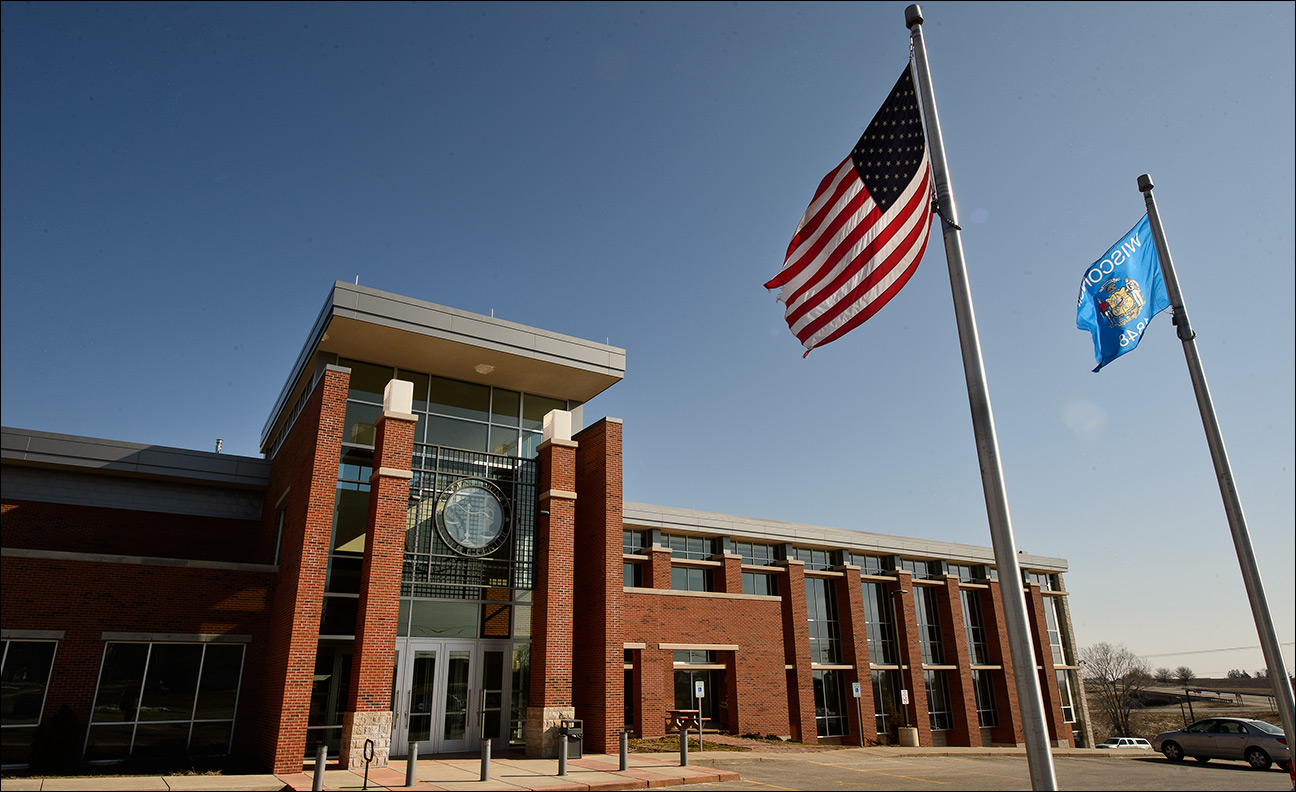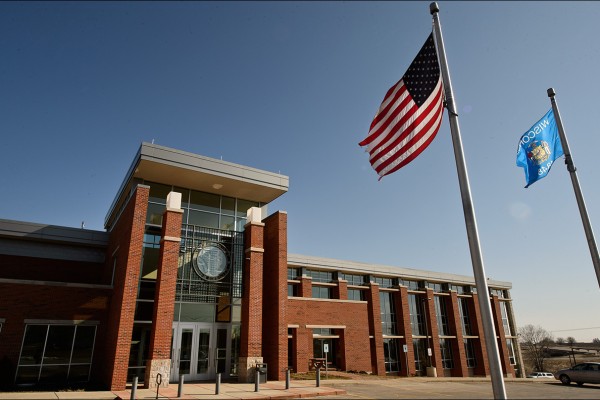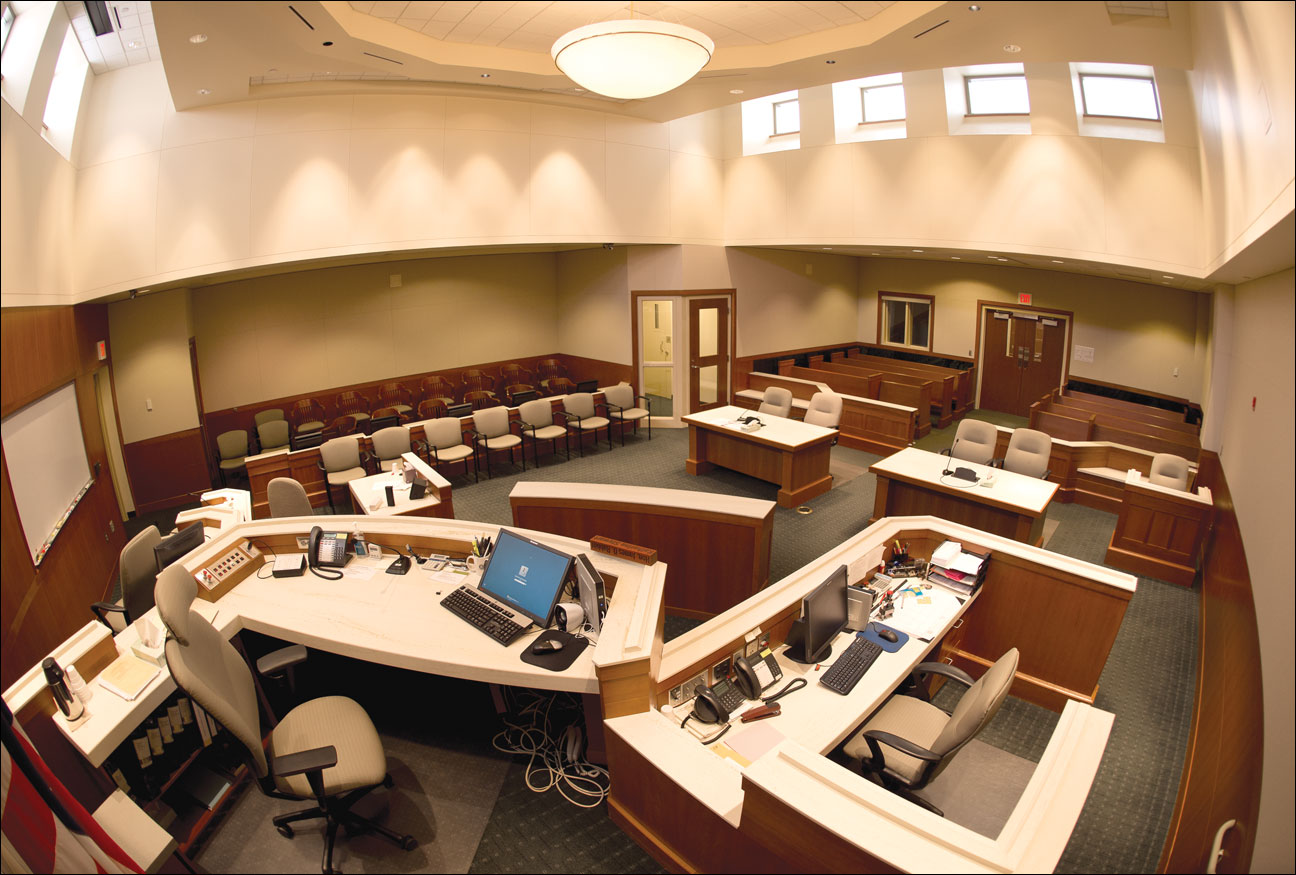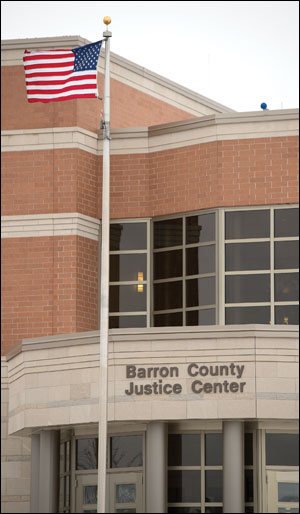Eau Claire County builds jail to fit courthouse goals
By: Allison Batdorff//May 23, 2013//

Eau Claire County has a new jail, but Judge William Gabler is more excited about how he and court staff members are keeping people out of it.
The new jail is part of a $59 million county government building renovation underway. Moving the county jail and boosting space for Eau Claire County’s Law Enforcement Center were the primary tasks, and a long time coming.
Court spaces have been left as they were, however.
“Everyone asks about my new quarters and all the improvements,” Gabler said, “and I have to tell them we’re in our old space with no changes.”
Although some security improvements are planned for the courthouse this year, all eyes are on the new 180,000-square-foot jail. The new space is an improvement from the previous building, which was torn down this past fall.
But court staff members hope the new cells will remain mostly empty, as they work to improve their justice system through participation in a national pilot program.

Eau Claire County was chosen in 2011 as one of three places to try the Evidence-Based Decision Making model of justice, which employs risk assessment tools to help determine who is most likely to commit crimes, what sanctions are appropriate for those people, and what and when to apply interventions to help. Interventions include substance abuse treatment, drug courts, mental health courts and more.
“If do you what you’ve always done, then you’ll get what always got,” Gabler said. “But it’s possible to break that cycle, especially with drugs and alcohol.”
EBDM is implemented through the Criminal Justice Collaborating Council, an “innovative” body of prosecutors, defense attorneys, and city and county law enforcement and human services personnel that “move in the same direction to resolve criminal cases efficiently,” Gabler said.
The group, of which Gabler is a member, meets six times a year.
Nationally, the EBDM program cites a 30 percent reduction in crime and boasts a significant cost-benefit to the communities participating.
“We’re spending less and keeping everyone safer,” Gabler said. “Who can argue with that?”

The new approach played into the jail project, Eau Claire County Clerk of Courts Kristina Aschenbrenner said, as the County Board downsized the original plan for more cells. An empty wing was built, instead, that can be shaped to meet the future needs of the county; whether that’s more cells or something entirely different.
“Eau Claire was smart as to not overbuild, yet leave room for future needs,” Aschenbrenner said.
The rest of the renovation focused on making the county building efficient and safe, said Project Manager Frank Draxler.

In the Government Center, most of the renovation was to make more room for the Law Enforcement Center, a shared space between city and county. Other departments, such as the Aging and Disability Resource Center, moved closer to the front entrance for better access to their clientele.
A new county boardroom was built off the main lobby, for easier access. All court business was consolidated onto the second floor. The third floor, the former jail, became office space for about 70 people, including those in administration, the County Clerk’s Office, the Planning and Development Department and others, Draxler said.
Just as with planning for how to build the jail space, flexibility was key throughout the entire building process, Aschenbrenner said. To accommodate the construction, the county changed operating hours, keeping a 7 a.m. to 3:30 p.m. schedule for four months.
Construction workers did the loud and dangerous demolition work on the third floor during a second shift, Aschenbrenner said. And she was given the construction foreman’s direct number to call if work got too loud during court hours.
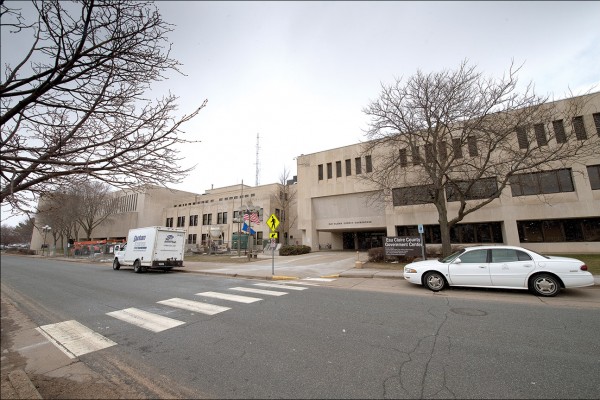
Work is set to conclude by December, but the county continues to share on its website specific breakdowns of the many facts and figures that make up the new government spaces. There, one can find the average number of construction workers onsite (100), how much paint was used (4,415 gallons) and how much recycled cardboard was used (13.86 tons).
Gabler said he can’t wait for the day that numbers will show the results of EBDM, however. The county is on the cusp, he said, of hiring a full-time data coordinator to track those in the program.
Legal News
- Former law enforcement praise state’s response brief in Steven Avery case
- Eric Toney announces re-election bid for Fond du Lac County District Attorney
- Former Wisconsin Democratic Rep. Peter Barca announces new bid for Congress
- Republicans file lawsuit challenging Evers’s partial vetoes to literacy bill
- More human remains believed those of missing woman wash up on Milwaukee Co. beach
- Vice President Harris returning to Wisconsin for third visit this year
- Wisconsin joins Feds, dozens of states to hold airlines accountable for bad behavior
- Trump ahead of Biden in new Marquette poll
- Bankruptcy court approves Milwaukee Marriott Downtown ‘business as usual’ motion
- New Crime Gun Intelligence Center to launch in Chicago
- Arrest warrant proposed for Minocqua Brewing owner who filed Lawsuit against Town of Minocqua
- Wisconsin Supreme Court justices question how much power Legislature should have
WLJ People
- Power 30 Personal Injury Attorneys – Russell Nicolet
- Power 30 Personal Injury Attorneys – Benjamin Nicolet
- Power 30 Personal Injury Attorneys – Dustin T. Woehl
- Power 30 Personal Injury Attorneys – Katherine Metzger
- Power 30 Personal Injury Attorneys – Joseph Ryan
- Power 30 Personal Injury Attorneys – James M. Ryan
- Power 30 Personal Injury Attorneys – Dana Wachs
- Power 30 Personal Injury Attorneys – Mark L. Thomsen
- Power 30 Personal Injury Attorneys – Matthew Lein
- Power 30 Personal Injury Attorneys – Jeffrey A. Pitman
- Power 30 Personal Injury Attorneys – William Pemberton
- Power 30 Personal Injury Attorneys – Howard S. Sicula







